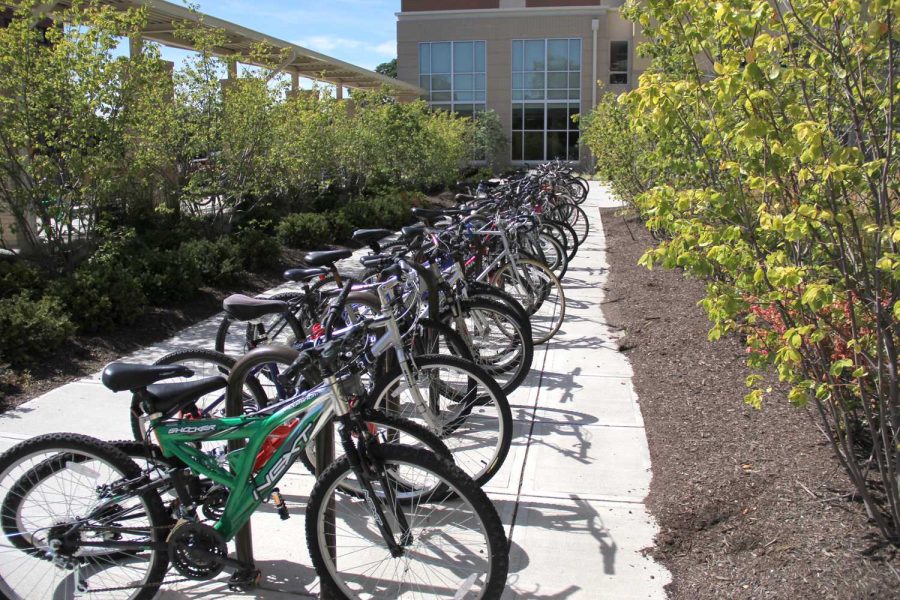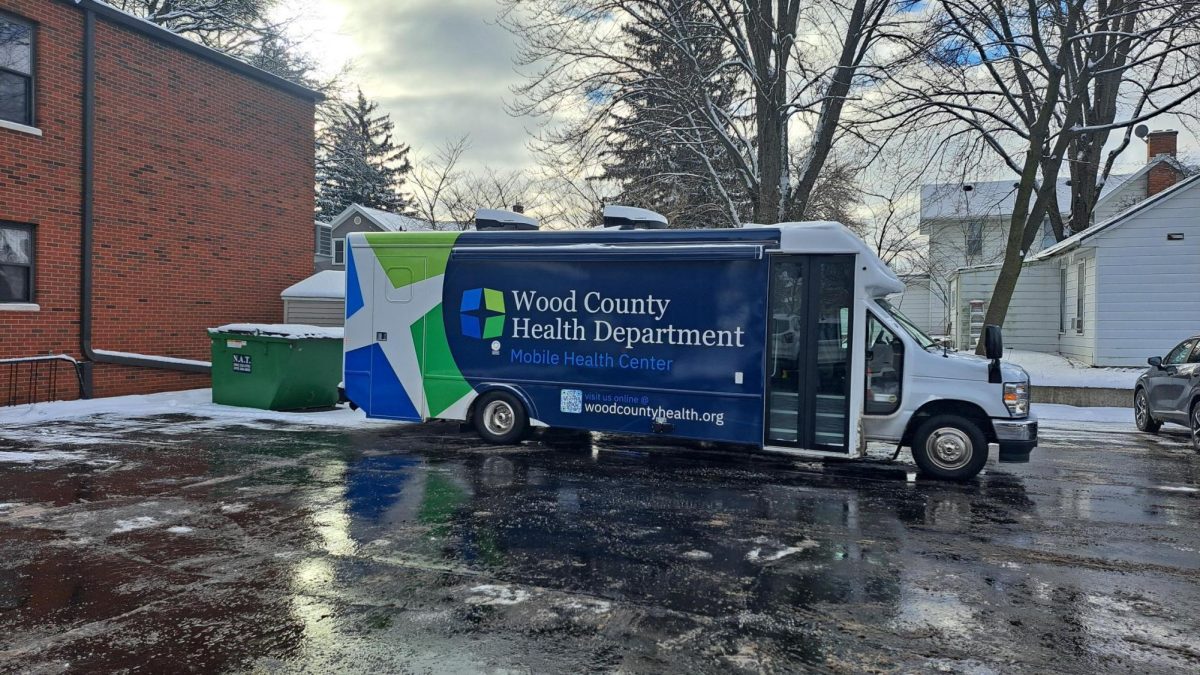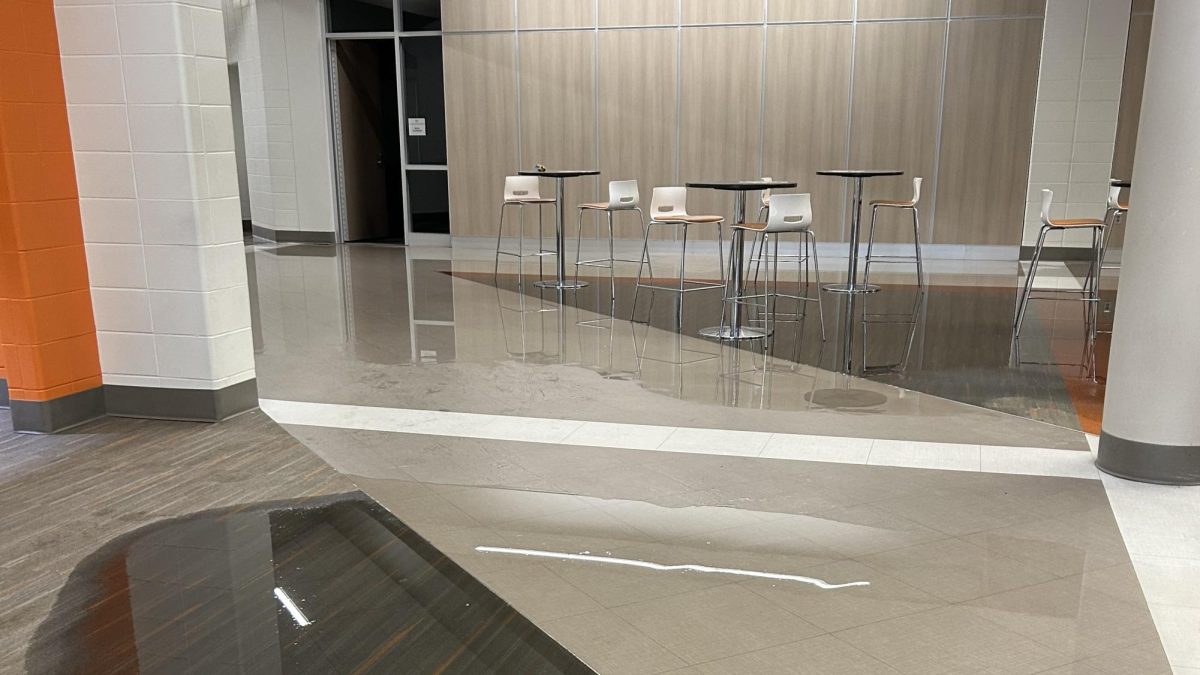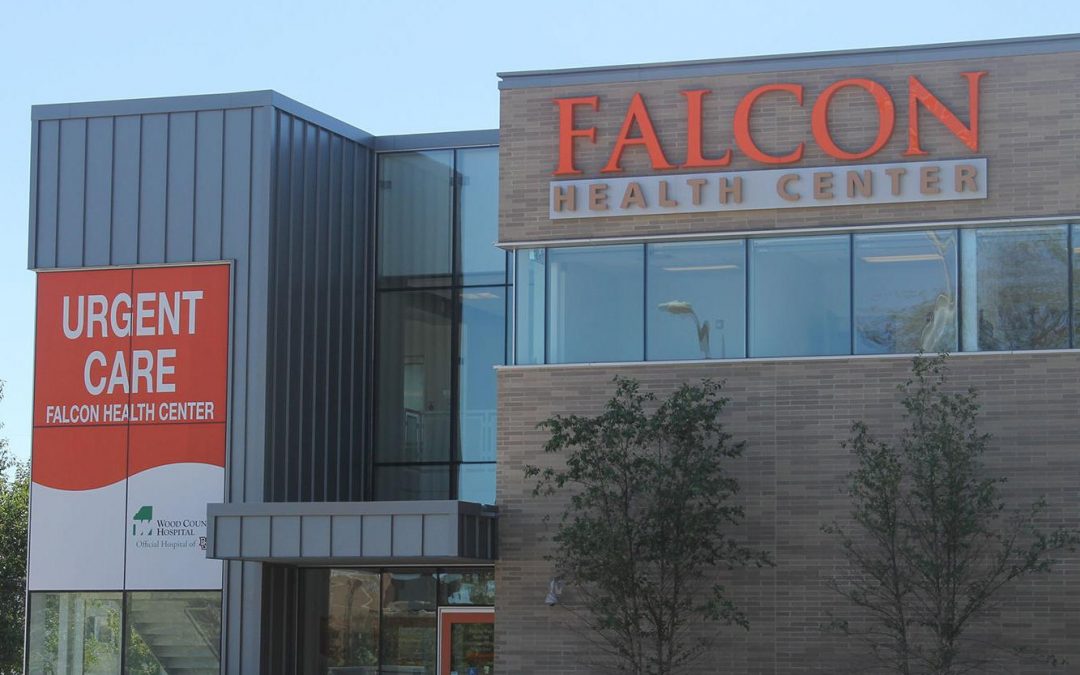Some students’ bicycles locked to structures other than bike racks on campus might have their locks broken and be taken— but not by bike thieves.
University police and Campus Operations are working together to stop students from locking their bikes to objects such as trees, poles and benches.
The issue came up earlier this month when a bike was locked to a handicap door button at the main entrance to the Wolfe Center, making it difficult to press the button, said Capt. Tim James of the University police.
“[That’s] when folks finally said we’ve got to do something about this and get the police involved to see how we can remedy the situation,” James said.
Both the student handbook and city law require bikes to be locked to only bike racks. Failure to do so can result in the removal of the bike at the owner’s expense.
If an improperly-locked bike blocks people from walking or entering a building, then Campus Operations might cut the lock and give the bike to University police, who store it in a warehouse, James said. If no one claims the bike after a 180 day period, the bike is sold at auction.
Sophomore Michaela McCamey rides her bike on campus and said there are not enough spaces to lock bikes.
“I had to lock my bike to a chair once, when the bike racks were full,” she said.
James said students should register bikes with city police to help identify ownership in case a bike is impounded or reported missing.
City law requires all bikes be registered with the Bowling Green Police Division, said Maj. Tony Hetrick of the Bowling Green Police Division.
“It aids us in getting it back to you if it comes up missing so it’s really a benefit to the bike owner to come up and provide the information and buy the license,” Hetrick said. “It’s like an added level of insurance.”
Nick Hennessy, sustainability coordinator at the University and head of the Orange Bike Program, removed several Orange Bikes locked to objects around the Wolfe Center.
The problem is not because of the number of bike racks on campus, he said.
“You see bikes locked up to the [handicapped] bar and to the physical structure of the Wolfe Center and then you look over at the bike racks, which are not far from the entrance of the building, and there are two bikes there and there would be like a dozen bikes locked up to other objects,” Hennessy said.
The University added 30 recycled plastic bike racks this past year as part of a Student Green Initiative Fund project headed by Undergraduate Student Government and another 50 were added during the summer, he said.
The problem is caused by the increased number of bikes on campus at the beginning of the semester and students not knowing where the bike racks are, he said.
“I think really what you see is in the fall, a lot of people bring bikes to campus and there’s this sudden population explosion of bikes and it seems like there’s a shortage of space at some of the racks,” Hennessy said. “It’s just a matter of evening out at the beginning of the semester until everybody knows where the bike racks are and realizes that they’re not supposed to be tied to a tree, a lamp post or a bar in front of a building.”














